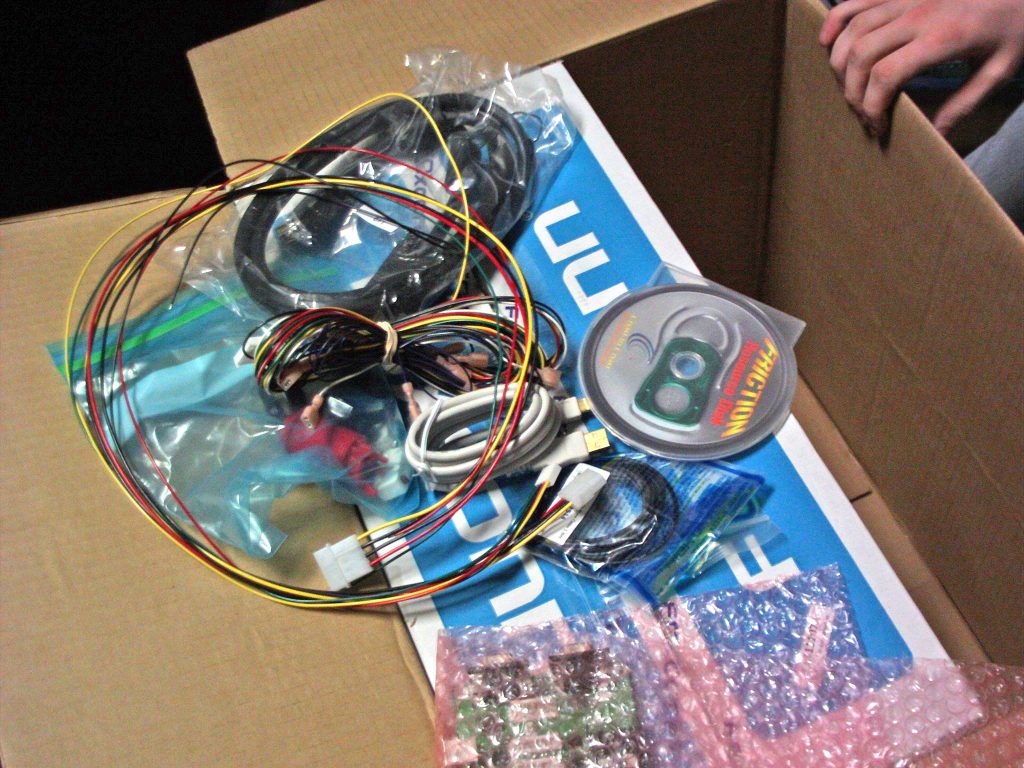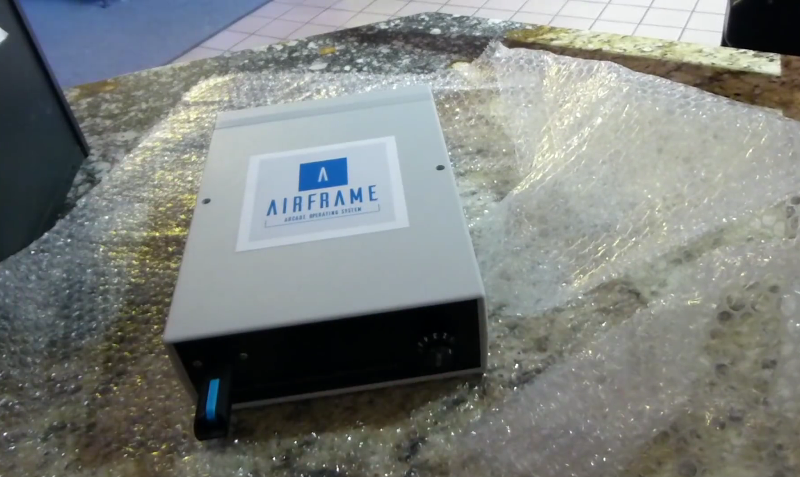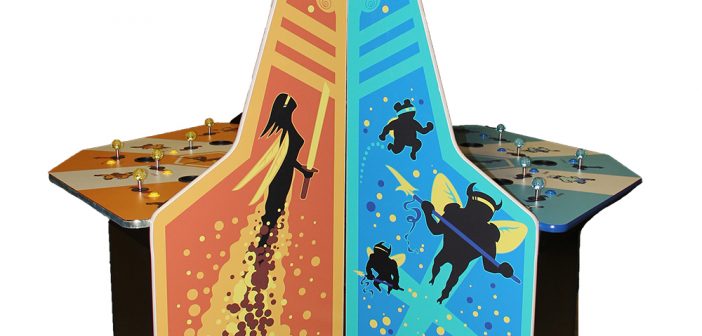 My Experience With the Indies
My Experience With the Indies
How These Game Developers Work in a Real-World Arcade Setting
by Adam Pratt, Game Grid Arcade & ArcadeHeroes.com
With all the talk of “indies” (independent game developers) in the arcade space as of late, I wanted to share my real-world arcade experience with these developers and their games in my arcade business.
Thanks to digital distribution platforms like Steam, the Apple Store or Google Play, indie games have become quite the force among home gaming. Just about anyone can get their game out onto the market, to the point that it is very easy for your game to become completely lost in that ocean where thousands and thousands of games are released every year. For an indie attempting to release their work for coin-op arcades, that task requires one to be a jack-of-all-trades, as opposed to a master of one, not to mention the amount of capital needed to create your hardware solution which presents a barrier that 99% of indie developers never have to fathom. (I do have to say, however, that the technical support they’ve offered me has been stellar –– always attentive and fast to respond to any issues that my games have had.)
It is worth noting that in Japan, Taito and Sega have created arcade versions of digital distribution platforms such as NESiCAxLIVe and ALL.NET+, respectively. Only NESiCA has recently landed at Round1USA locations here, but that’s not exactly a solution that Western indies can rely on right now since the service is still focused on Japan.
The first indie I did business with was a company that shut down before I even opened my doors, though I did end up with the piece in my arcade. Called Cecropia, they had developed a game called The Act: An Interactive Comedy that fulfilled the promise of Dragon’s Lair by offering much more interactive play than just push the right button when the flash appears on screen. Players used a knob to control the cartoon character. How much you turned it determined the intensity of the emotional response. Featuring Disney-level animation and a fun story, I was always proud to display it in my arcade. The only problem was that since the game was never officially released (40 kits and two dedicated cabinets were made; only 10 prototype kits were listed on eBay) and the company closed. There have been a couple of technical issues that were very difficult to resolve. At the moment, the game is inoperable since a proprietary I/O board has failed. It’s the roll of the dice, but when it worked, it brought in many players to witness something very different.

Friction kit
The next indie I came across was Friction Game Studios, based out of Southern California. Their flagship title was the light-gun game Friction. While it may not have created something never-before-seen in light-gun games, the efforts of its small team was professional with tried-and-true gameplay and excellent arcade-quality 3D graphics. (The whole reason “pixel art/8-bit style” is a thing is because a lot of indies are coders, not artists). They also designed their own kit, which was released through Coast to Coast Entertainment. Having received the kit back in 2011, it still operates in my arcade today and it has held steady on earnings, even out earning more recognizable titles like Area 51, Jurassic Park III or House of the Dead 4. This was rolling sixes as far as dice are concerned.
A year after that, I finally brought rhythm gaming into my venue with the independent release of ReRave by Step Evolution and Coast to Coast Entertainment. They took the higher-risk route of designing and distributing a game in a cabinet since a kit couldn’t work in that particular instance. The touchscreen-based play wasn’t something my customers were used to seeing in an arcade. It had a harder time earning than in a light-gun game, but it did create loyal regulars and also had broad appeal to old and young, male and female players. It featured free, online song updates, score tracking and player accounts (something we don’t see with a majority of professional arcade releases even in 2016). It has also been a good piece to take to events (except for the part about moving the game cabinet… it’s a beast!). I felt pretty good about where the dice landed here, too.

The Airframe PC-based game platform from Griffin Aerotech. The first title is called SkyCurser and two others are reportedly in development.
Most recently, I have picked up Griffin Aerotech’s launch title, SkyCurser. They also went the kit route, designing their own PC-based platform called Airframe. It is a scrolling shoot ’em up game, a genre that has received little love from the Western arcade industry after 2000. Featuring old-school gameplay, an art style that screams Metal Slug from the ’90s and, yes, even some bloody violence (optional), their game has been a different experiment as it’s still in development.
Bug fixes and new levels for SkyCurser have been sent via USB sticks, but this is changing with the next update getting pushed out wirelessly. Because the genre isn’t as recognized in our business as it used to be, this one takes more marketing work to get people to try it, but I’ve been seeing play increase on the game. With those factors in place, the dice are still rolling so we’ll wait and see when the game is finished.
The great thing about the Airframe hardware is that it isn’t expensive and it’s easy to change games out. In fact, I’ve been told about two other titles that are currently in development for it: a patriotic beat ’em up called Founding Force and an untitled sports game that will be similar to the old Windjammers. You heard it here first!
There have been other indies to come along that I was unable to add to my arcade, usually due to capital at the time, such as DJ Max Technika by Pentavision, the new NEOGEO MVS titles by NG:DEVTEAM, Neon FM by Unit-E Technologies or, most recently, Killer Queen Arcade by Bumblebear Games.
This summer, Galloping Ghost Productions is working with Game Refuge (the company of former Midway/Williams game designer and artist Brian F. Colin, who worked on games like Rampage and Xenophobe among others) to release a few new titles including: The Spectre Files Deathstalker (FMV Horror/adventure game that was originally made for laserdisc arcade back in 1985 but unreleased), Raiders Run (modern 3D maze/treasure collecting game), and Fish In A Barrel (multiplayer, light-gun game in a cocktail, not an upright, cabinet).
The llinois-based Galloping Ghost is also working with HitSpark Games on their Space Harrier-style Strike Harbinger.
If we include pinball, there is even more to discuss. So many games, not enough space and capital to have them all!
Overall my experience with indies has been very good. Perhaps I’m drawn to them by the fact that being a small arcade business owner feels like being an indie since I similarly don’t have the backing of a large, well-funded corporation at my disposal. While I’m the owner of the company, I’m also wearing the hats of front desk customer service rep, manager, accountant, marketing director and technician as needed. As more of these small players come into the arcade space, I appreciate the unique perspective and innovative games that they are bringing with them –– something we should embrace as an industry to stay relevant, not stifle.
Let me know what you think by emailing [email protected].
Adam Pratt is the owner and operator of the Game Grid arcade near Salt Lake City, Utah. He also publishes the Arcade Heroes blog site and serves as an advisor for the web-based game supplier BMI Worldwide. He can be reached at [email protected].




